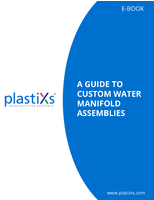New Technology Facilitates Planning for Active Hurricane Season
NARRAGANSETT, RI- Following the NOAA prediction for an above average tropical storm season, Applied Science Associates, Inc. (ASA) announces computer modeling and mapping technology as an effective way for planners to visualize the potential impacts from hurricanes and plan for catastrophic flooding events.
The approaching 2008 Atlantic hurricane season is likely to be above normal, with up to 16 named storms and up to five major hurricanes, the National Oceanic and Atmospheric Administration (NOAA) said last week, citing climate conditions.The outlook issued by NOAA's Climate Prediction Center calls for "considerable activity," with a 65 percent probability of an above-normal season.
One of the challenges in hurricane forecasting is communicating the potential impacts to the public, emergency responders, and scientists.
ASA uses its Flood Inundation Toolbox(TM) to calculate flood extents based on flood elevation predictions, produce flood maps, and distribute those maps via the Web. The ability to translate NOAA forecasts into a meaningful visual product dramatically improves the communication of risk to officials as well as the public. "By mapping the impact, storm surge, and flood zones of hurricanes and other severe storms on actual up-to-date maps and satellite images," says ASA scientist Kelly Knee,"we can assess the risks associated with the onset, duration, and severity of hurricane flooding and storm surge events and work to reduce vulnerability."
The Flood Inundation Toolbox is a suite of web services that allows distribution of integrated data within geographic references for environmental problems and crisis management solutions. The use of flexible open standards allows for distribution of data to web pages and email feeds, and enables strategies to distribute warnings to mobile devices, including cell phones. The outputs from the predictions can also be imported into a variety of widely-used mapping applications such as Google Earth(TM) and Microsoft Virtual Earth to provide high resolution local context.
ASA is currently preparing a series of maps for the World Wildlife Fund representing flooding along the U.S. Gulf Coast. These maps, covering an area from Galveston, Texas to Tallahassee, Florida, blend data from multiple sources with the USGS National Elevation Dataset. The resulting elevation dataset is being used to assess the impacts from a Category 3 hurricane under today's conditions, as well as for four other projected sea level rise scenarios. The World Wildlife Fund is just one of several organizations working with ASA to look at potential storm impacts in the upcoming hurricane season.




